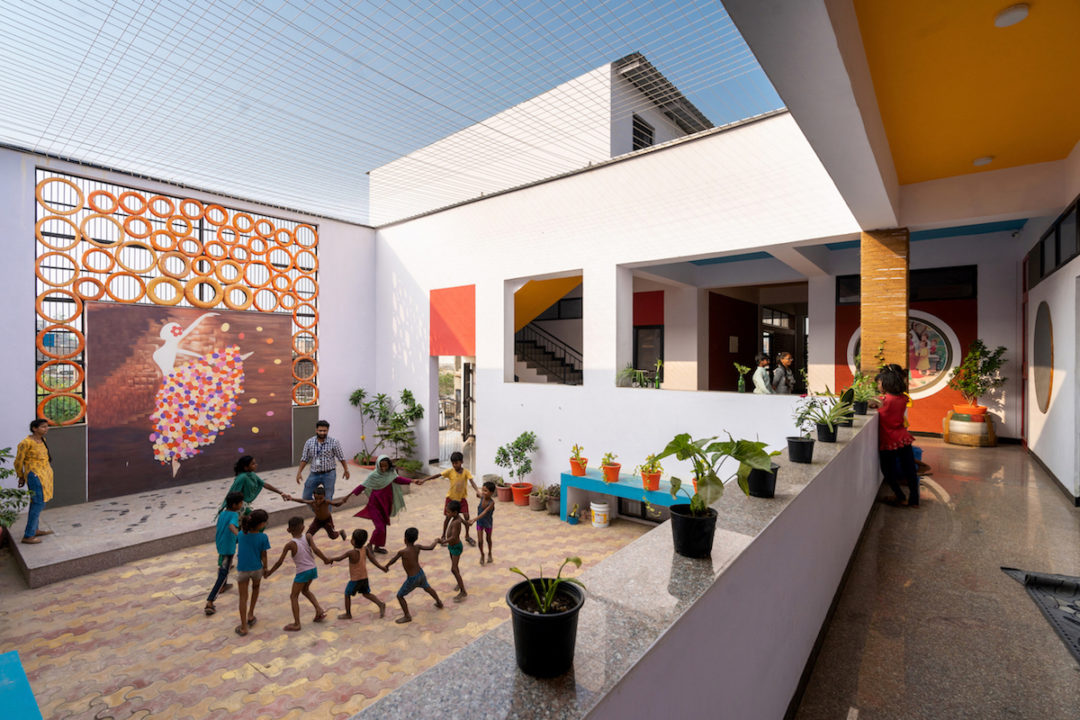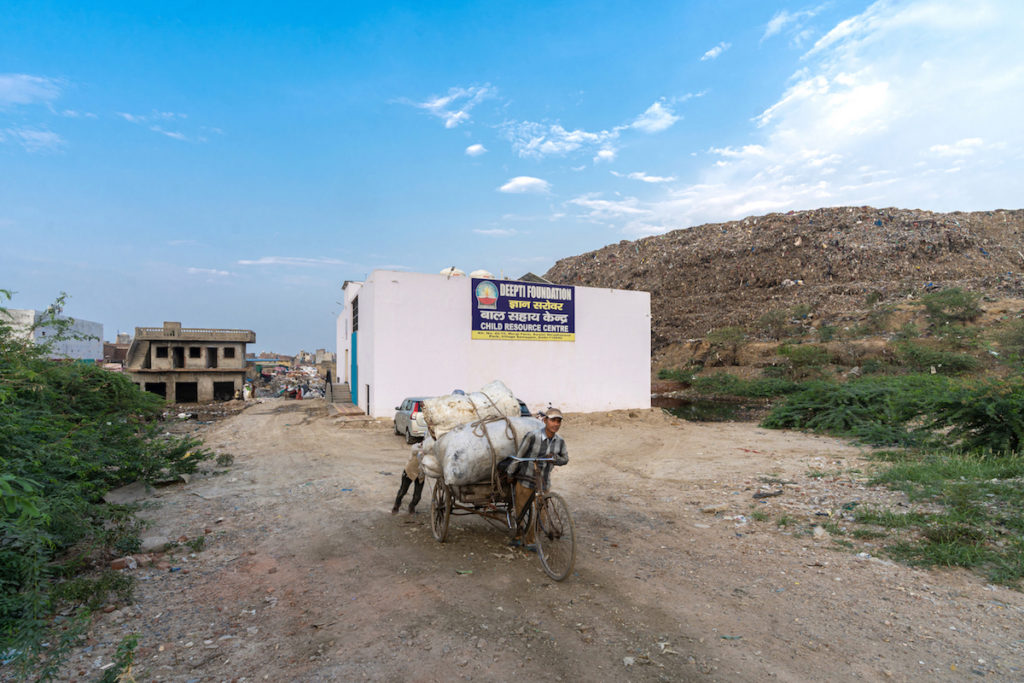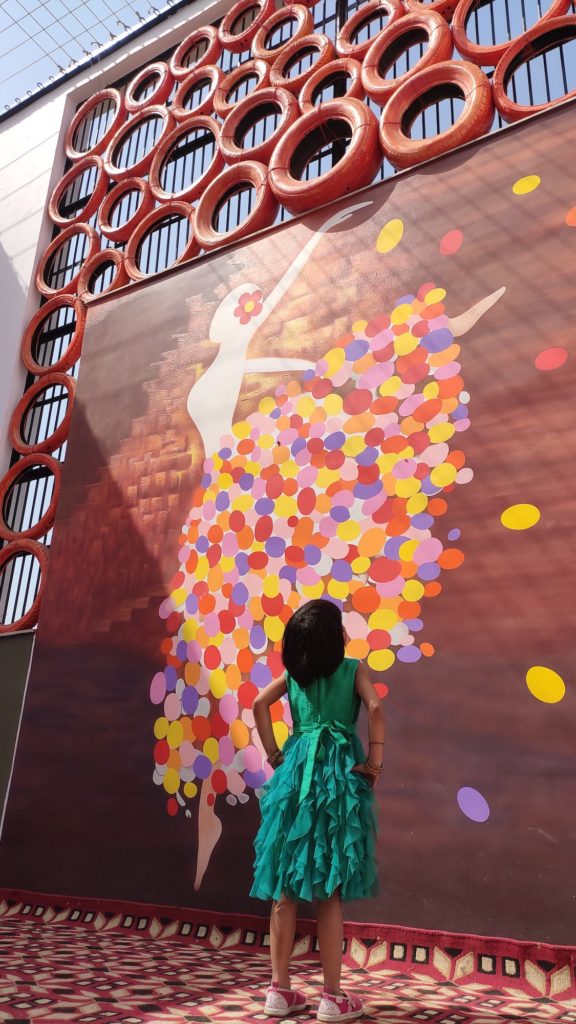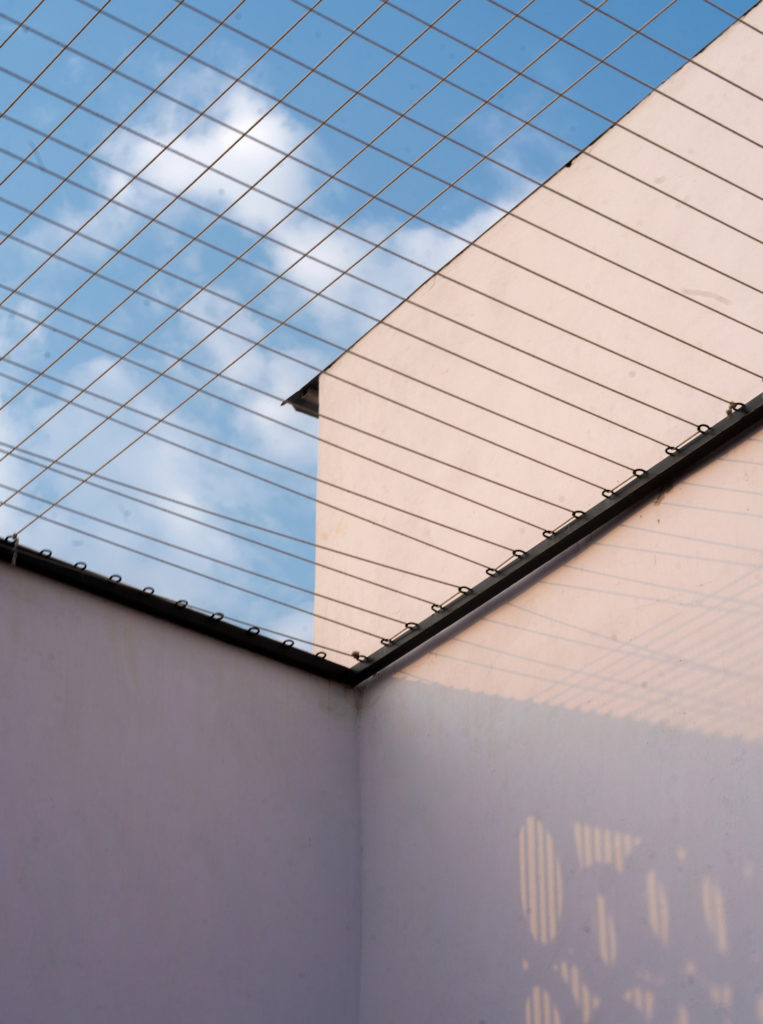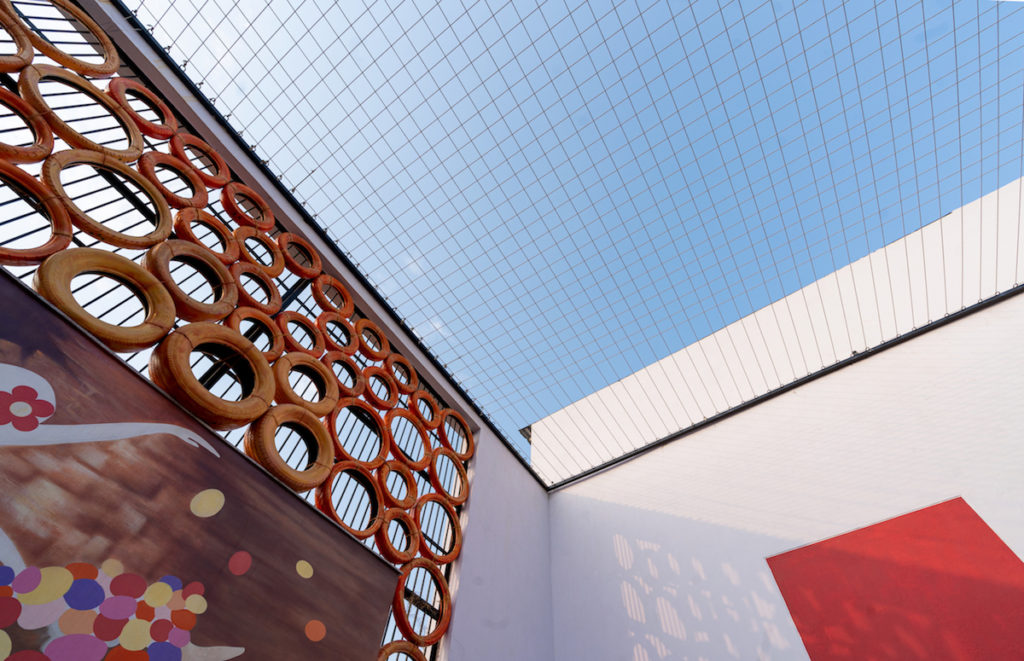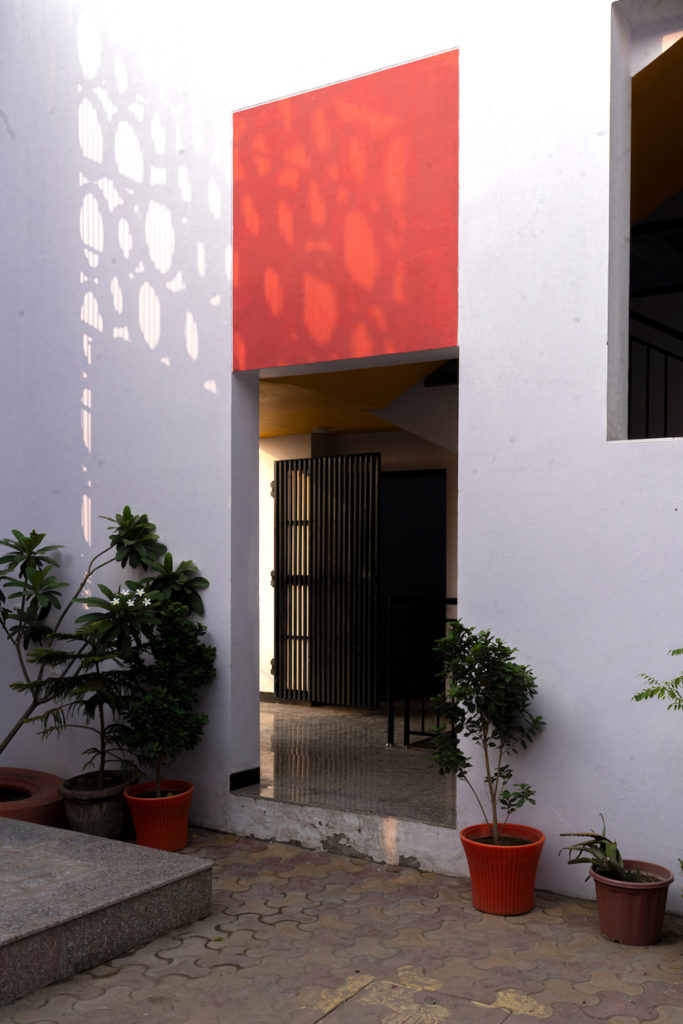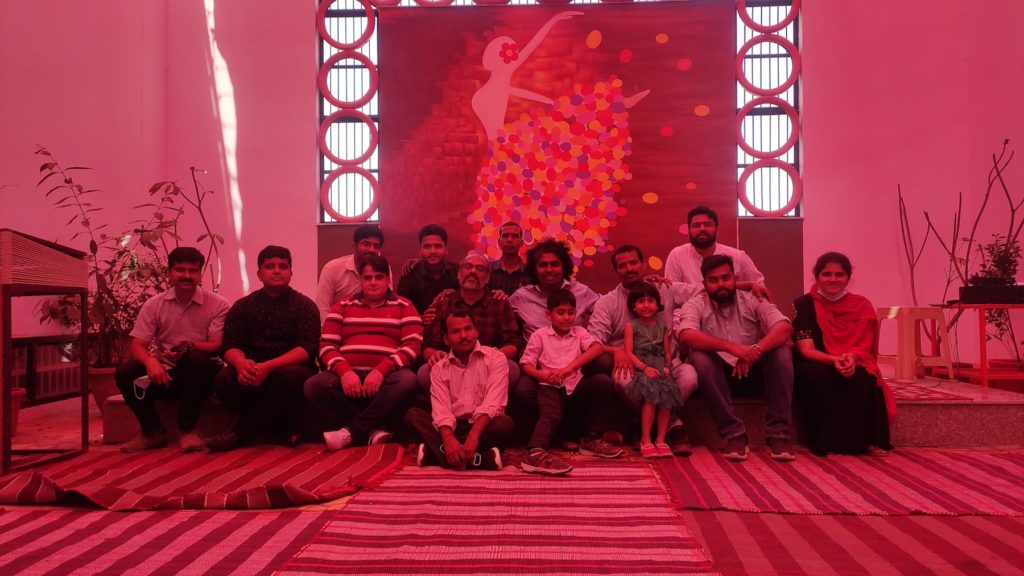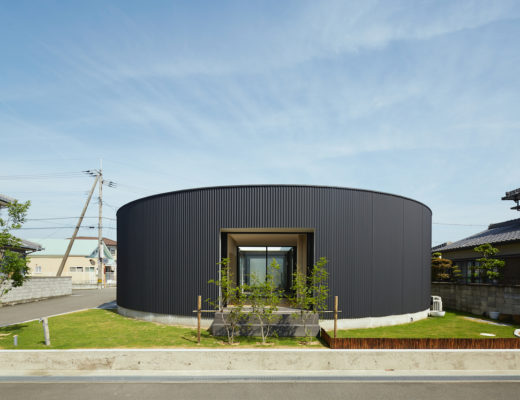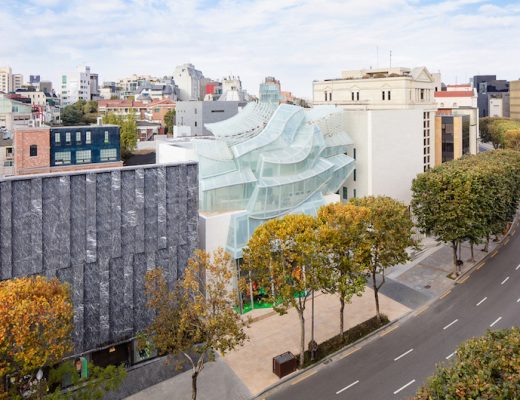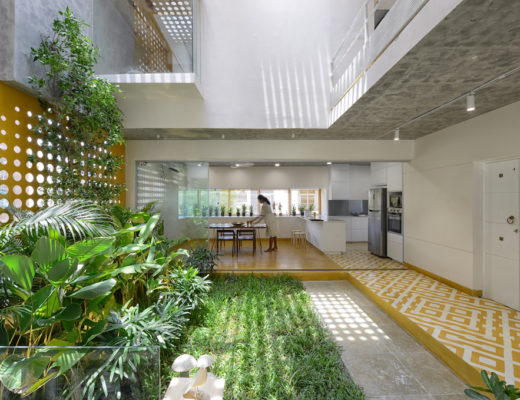The challenge? How do you design on a site that is perennially polluted in terms of air, water and land? Clue: The architect and his team had to think inside the box.
In the northwestern part of New Delhi, India’s capital city, which is home to many urban villages, an area called Jehangirpuri stands out – not for any particularly spectacular reasons. It stands out because it is one of the most polluted areas in a city that is already the world’s most polluted. It is also home to one of the most toxic landfills – the Bhalswa landfill – one of the three landfills in a city of 18 million inhabitants.
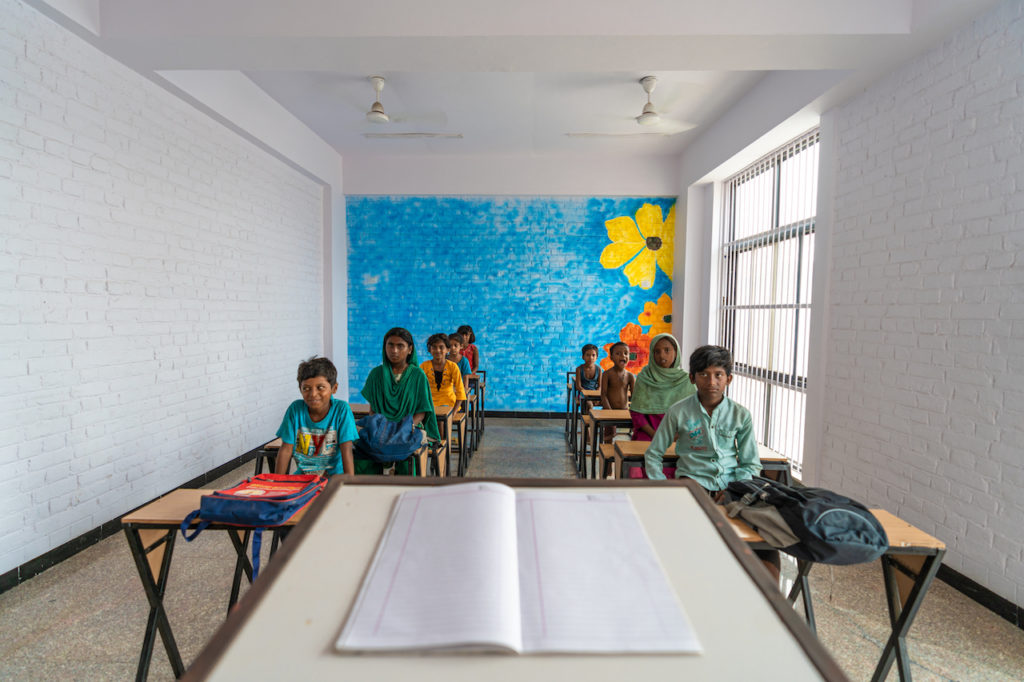

Operational since 1994, around 1,800-2,000 metric tonnes of waste continues to be dumped at the site daily, as a result of which, it purportedly stands around 61 metres tall – it is visible from miles away – and stretches across 70 acres, with an estimated 8 million cubic metres of legacy waste above ground level and 8 million cubic metres below. Despite the local civic authorities’ attempts to reduce the height by converting some of the recyclable waste materials into fertiliser, and eventually transform the site into a green park, the conditions have not improved.
The community that lives against the backdrop of this landfill faces perennial pollution-induced health and safety hazards, such as breathing in toxic fumes from burning rubbish that is also a cause for safety concerns, having witnessed several fire incidents, and from trucks moving in and out a large depot and dust rising from unpaved roads.
But a non-profit and an architect are trying to bring about a change for the community with a new school that serves as a learning centre for the children of the underserved community, and a vocational institute for women to learn skills such as tailoring as well as a refuge for the community, majority of whom live in flimsy and makeshift housing. Commissioned by the Christian Missionary non-profit Deepti Foundation, and designed by architect Alex Joseph of New Delhi-based practice MySpace Architects, the school is named after its location – School in Dumpyard by Deepti Foundation.
DE51GN speaks to Mr Joseph about what inspired him to collaborate with the non-profit on this pro bono project and how did he and his team face this challenge of designing a school on such an unfavourable site as the foothill of a landfill.
While most would turn away from such a site due to its uninhabitable conditions, Mr Joseph decided to explore ways to optimise the available resources to create a safe, healthy and joyous environment for children who do not have much to look forward to in life.
“If you actually visit this dumpyard, you’ll realise that there is a thriving micro recycling industry that provides work to the people who reside here,” he says, matter-of-factly. “Most people residing here are ragpickers who collect recyclable items and sell them outside. Their children don’t have access to good education, and as a result there are lots of social issues such as drugs and physical abuse. Deepti Foundation has been working with the community for the past 20 years, during which time, they have conducted outreach programmes, women empowerment initiatives and informal schooling for the children in the community.”
“When we visited the site three years ago, which lies in the valley of the landfill mountain, we did a detailed study and realised that everything is polluted there – from the air to underground water and the land itself. There are lots of eagles and vultures in the skies who drop garbage while flying around. Odour is a also massive problem.”
Ar. Alex Joseph
The non-profit also conducts awareness programmes through a few informal stations spread throughout the locality on civic matters such as water-borne illnesses caused during flooding, and now Covid-19. The organisation also provides protein-rich daily food to the people in Bhalswa landfill area. Prior to the construction of the school, it didn’t have a space to conduct such activities. Armed with the belief that the best way to empower the community and alleviate them above poverty level is to provide them with education and enfranchise them, the non-profit acquired some land space and consulted with MySpace Architects to float the idea of a school. It helped that the two teams had previously collaborated on another community school project in the Punjab province.

Mr Joseph shares: “When we visited the site three years ago, which lies in the valley of the landfill mountain, we did a detailed study and realised that everything is polluted there – from the air to underground water and the land itself. There are lots of eagles and vultures in the skies above who drop garbage while flying around. Odour is a also massive problem.”
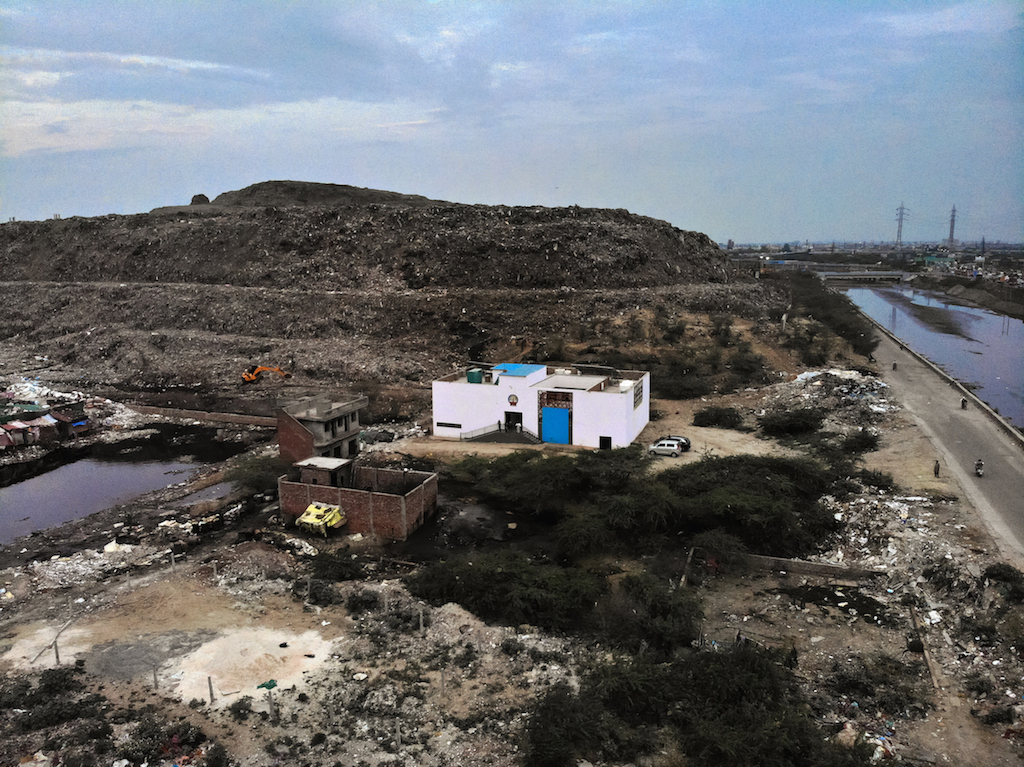
In the face of such challenges, and after brainstorming with the commissioning client, Mr Joseph and his team decided to create an insular built environment. The team visited the site several times. In terms of spatial requirements, the school needed a couple of classroom spaces which they could run at different times of the day for different age groups, one community kitchen and dining space, a staffroom, and a multipurpose hall for tailoring classes for the women in the community.

“Usually, when we design something, we always try to take advantage of the outdoors. But in this case, the building couldn’t be outward facing. Instead, we decided to make it an inward looking building, which will open onto a courtyard in the centre that can be beautified and where, to a large extent, we can control conditions such as the air and water quality,” says Mr Joseph.
The children in the community are so used to their unliveable, squalid conditions that anything the team constructed would have been an improvement for them. However, the team wanted to create a space that did not pander to a charitable bearing but provided dignity to the children and women who would use this space as their daily refuge from a hardscrabble life. “We wanted to create an environment where they could be exposed to a better way of living that helps in their holistic growth and development,” says Mr Joseph. The classes, ranging from nursery level to grade 7, are even equipped with the latest teaching equipment including smart boards.
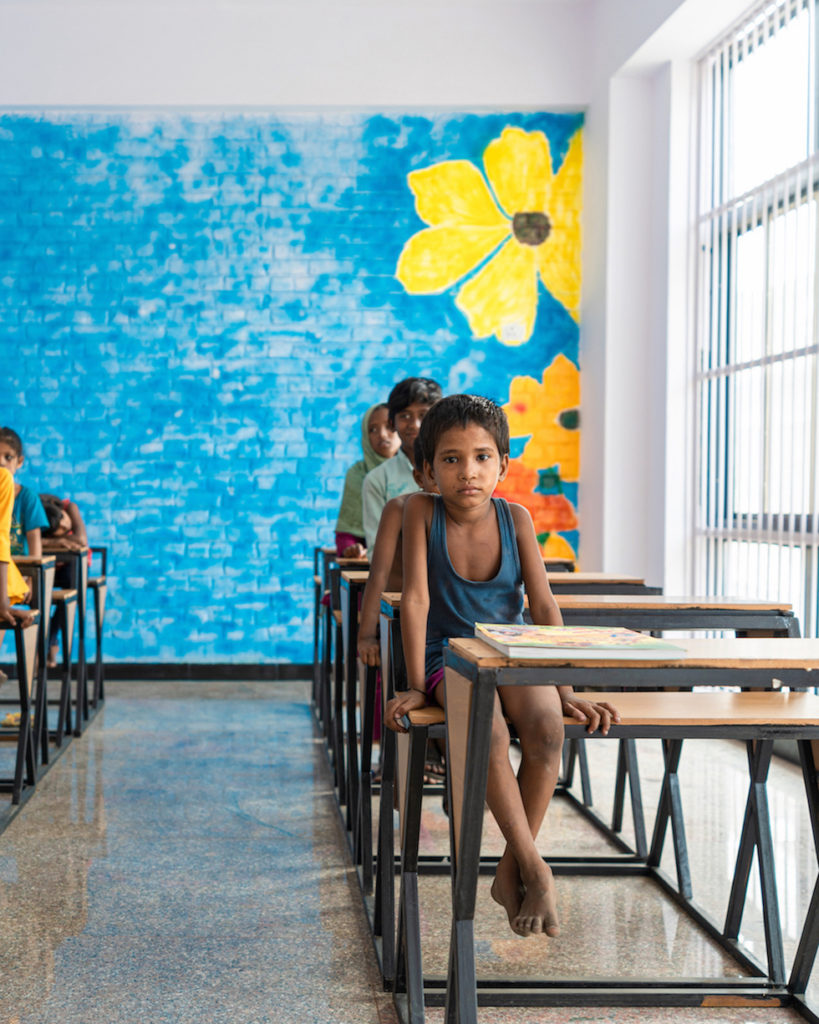
The low-lying site sits below the nearby access road, which provided the opportunity to create a cellar space which could be used as the multipurpose hall. Working with a low budget, the design team decided to spend most of it on creating a solid, concrete structure where the children could feel safer. It creates an insulated exterior form. Inside, the interior features exposed brick walls to keep the maintenance requirements as low as possible. The area of the site is just 26m x 16m, while the dimension of the courtyard in the middle is 4.5m x 10m. The two levels are connected through a staircase.
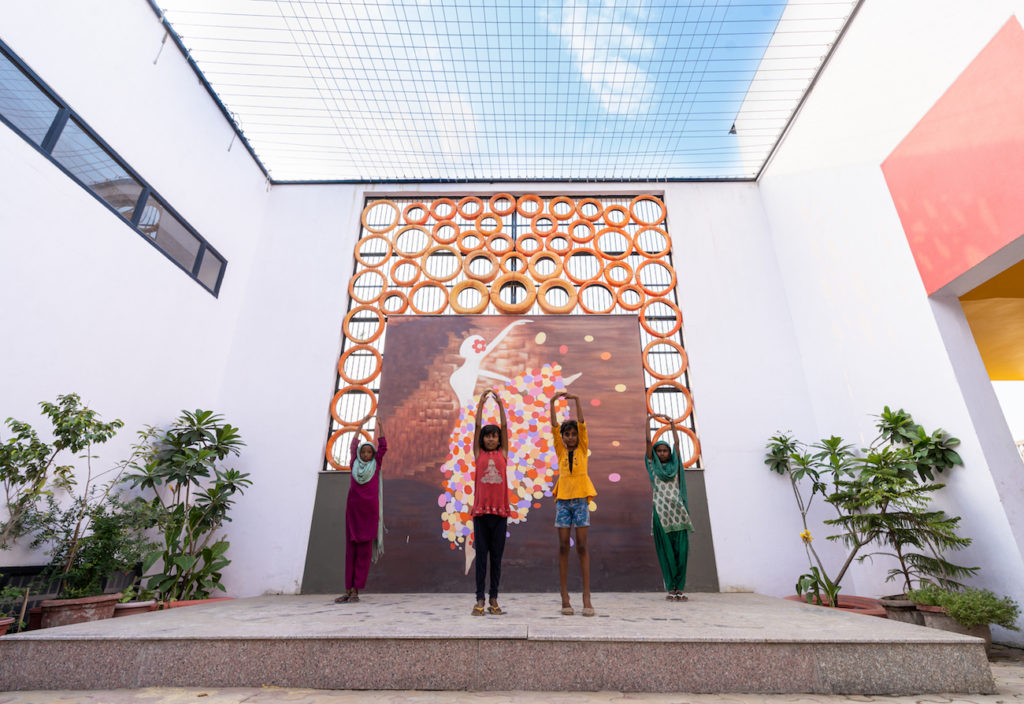
“For the interior finishes, we tried to use locally available materials as well as repurposed objects sourced from the dumpyard to enhance the interior atmosphere,” Mr Joseph shares. “There is a small courtyard inside which didn’t have a specially appealing character. So, we painted the mural of a dancing ballerina to give it a positive vibe. There is a small raised platform and the children love performing against the backdrop of the mural. The interior courtyard, on the other hand, features lots of plants with disused tyres acting as planters. The courtyard only opens up towards the sky. We created a covering for this opening using jute ropes found in the dumpyard to prevent pollutants from falling inside as well as protecting the interior from harsh sunlight. The jute covering also creates shadow patterns that provide an interactive element for the children.”
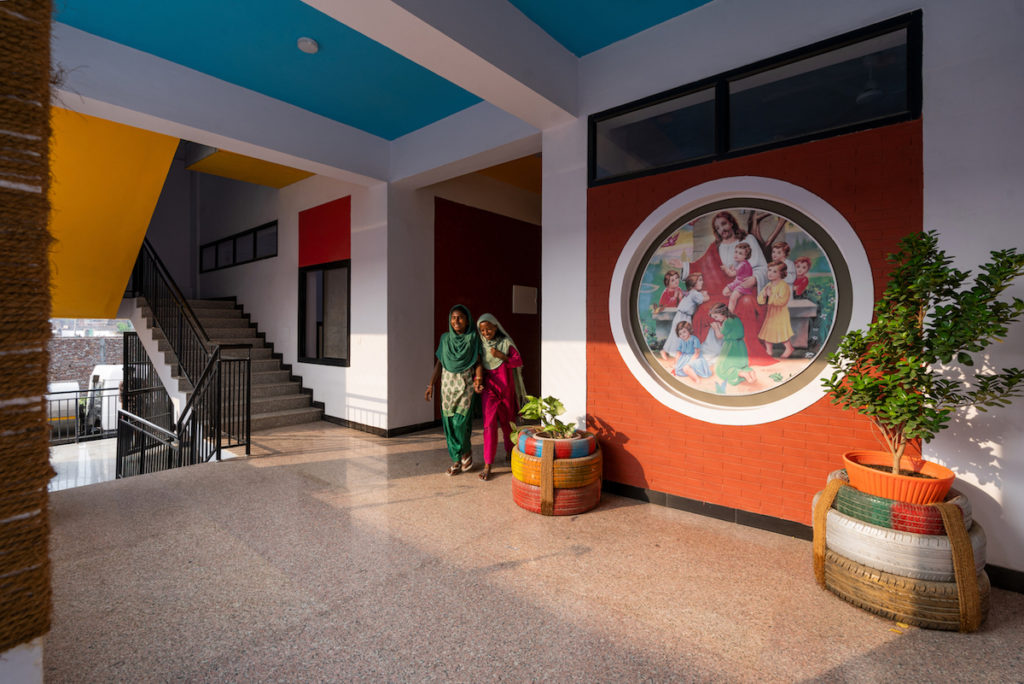
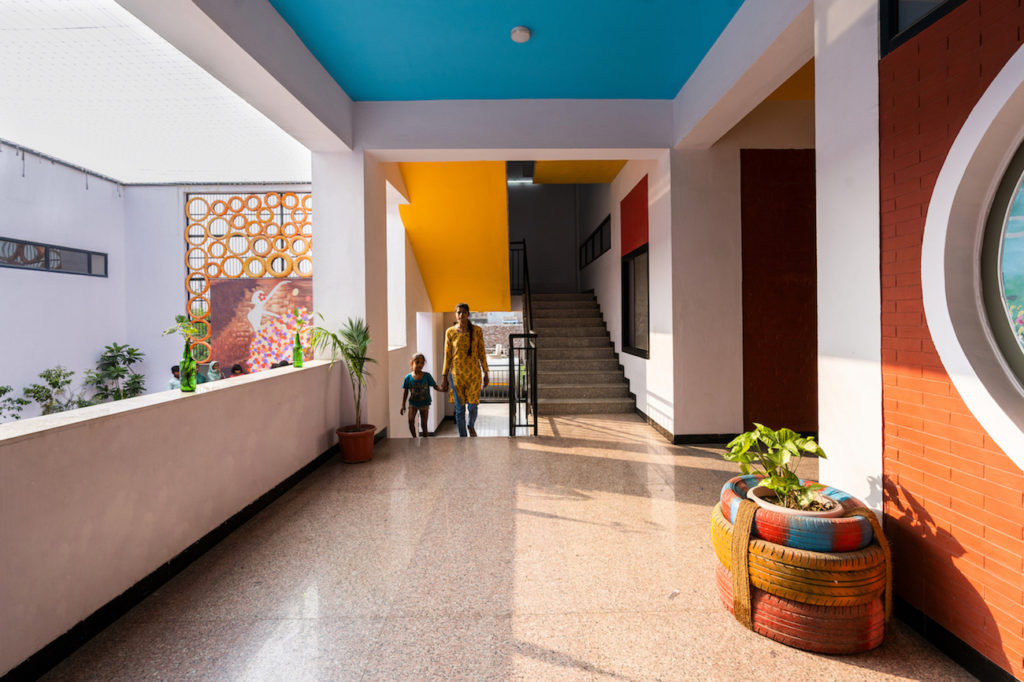
Throughout the interior, the team has attempted to create educational but fun features such as geometric shapes and scale. “We collected things from the dumpyard such as tyres that became planters and seating arrangements, and glass bottles which became a window installation,” says Mr Joseph. With the design team’s guidance, the children and their parents decorated the feature walls and installations.
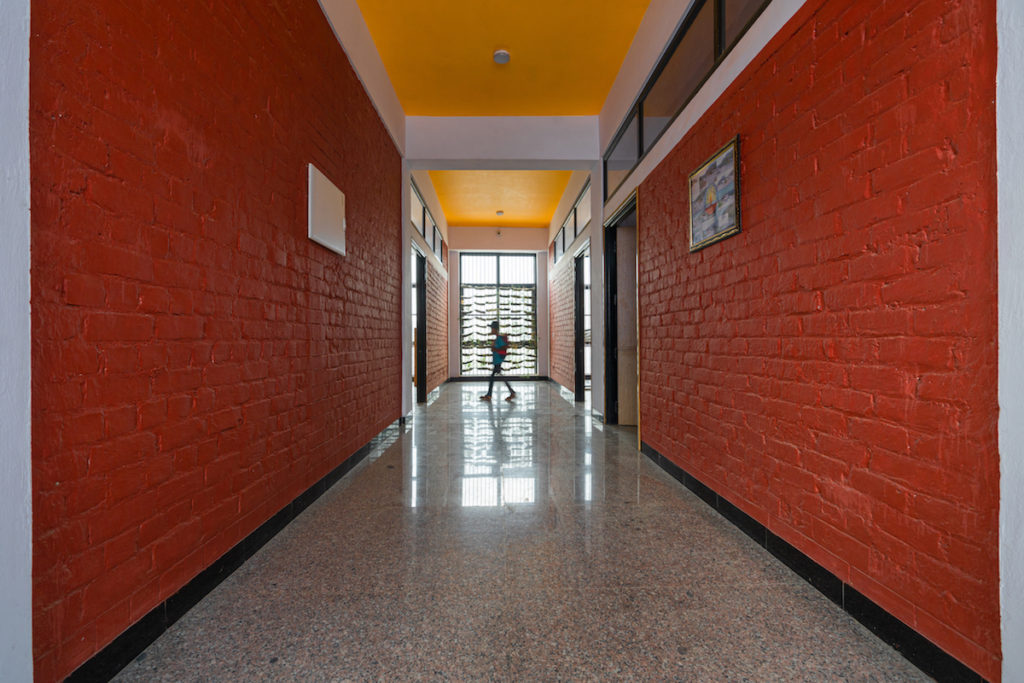
Two classrooms have windows that open on the outside but they are firmly sealed and only serve to bring in natural light. The sole air circulation channel is through the roof opening in the courtyard. The windows in corridors are also sealed and only function to bring in natural light and accentuate the vibrant colours inside. The teachers in the school are primarily former students of the informal school previously run by the non-profit.
“We wanted to create an environment where the children could be exposed to a better way of living that helps in their holistic growth and development.”
Ar Alex Joseph
In addition to the challenges posed by the site, other formidable problems included unavailability of regular electricity and water supply. Making use of the natural groundwater was not an option as it is severely polluted. To tackle these problems, the team installed solar panels on the rooftop, and provisions for battery storage, so that the school’s power supply is completely met through the use of solar panels. For plumbing needs, the MEP team created a septic tank with an outward flow, while two concealed water tanks were installed to receive harvested rainwater that is also equipped with a filtration system.
For Mr Joseph, the success of the project lies in the genuine smiles of the children who attend the school, the only semblance of stability in their lives. “When we visited the site initially, along with the priest, Father Santhosh, the children heard about the school and were very excited. After the school opened, we have visited them a few times and seen how happy they are. It has changed their outlook towards life altogether and in the future, they will be able to help their families also,” he says with a sense of pride.
Year of completion: 2021
Gross built area: 700m2
Client: Deepti Foundation, Fr. Santhosh
Project location: Bhalswa, New Delhi, India
Programme: Child Resource Centre
Lead architect: Alex Joseph
Architectural critic: Ar. Dona Alex
Design development: Ar. Rijul Nayal
Photo credit: Ar. Tushar Garg
Design detailing: Danny Chacko Mathew
Graphics: Nishu Prasad
Structural consultant: Er. Noble P Thomas/ Srishti Projects Pvt Ltd
Electrical consultant: Er. Rajasekhar Koneru/ PPES
PHE consultant: Deepak Khosla/Khosla Associates
Civil contractor: Er. Joseph Cherian & Ravi/Cherian & Sons
Wood work: Shantiprasad Semwal/Bajrang Interiors
You might also like:

